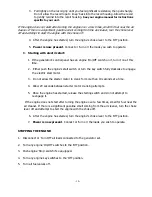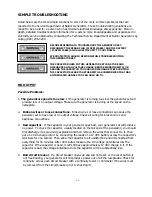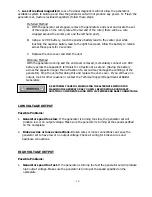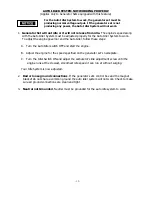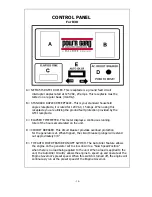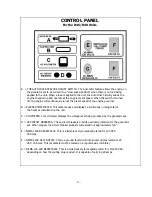
USE OF ELECTRIC MOTORS
Electric motors require much more current (amperes) to start them than to run them. Some
motors, particularly split-phase motors are very difficult to start and requires 5 to 7 times as much
current to start them as it does to run them. Capacitor Motors are a little easier to start and usually
require 2 to 4 times as much current to start them as to run them. Repulsion-induction type motors
are the easiest to start and normally require 2 to 3 times as much current to start them as to run
them.
Most fractional horsepower motors take about the same amount of current to start them as to run
them. This is true whether they are the repulsion-induction type motor, capacitor type motor, or
the split-phase type motor.
The other factors that influence the amount of current needed to start a motor are:
1. The type of load connected to the motor. If the electric motor is connected to a hard
starting load such as an air compressor it will require more starting current. If the same
electric motor is connected to a light load such as a fan or power saw it will require less
starting current.
2. The brand or design of the electric motor. The expected starting current for a particular size
motor will vary depending on the brand of the electric motor as well as the type of electric
motor (Split Phase, capacitor, Repulsion-induction type, etc…).
3. The condition of the electric motor. A clean motor with free turning bearings will require
less starting currents than a similar type motor that is dirty and the bearings are not as free
turning as they used to be.
- 7 -
Summary of Contents for Premier 'R' Series
Page 24: ...Generator End Componentry 17...
Page 25: ...Control Box Componentry 18...
Page 28: ...Connection Diagram R30 21...
Page 29: ...Connection Diagram R40 R45 22...
Page 30: ...Connection Diagram R60 23...
Page 31: ...Connection Diagram R60E 24...

















